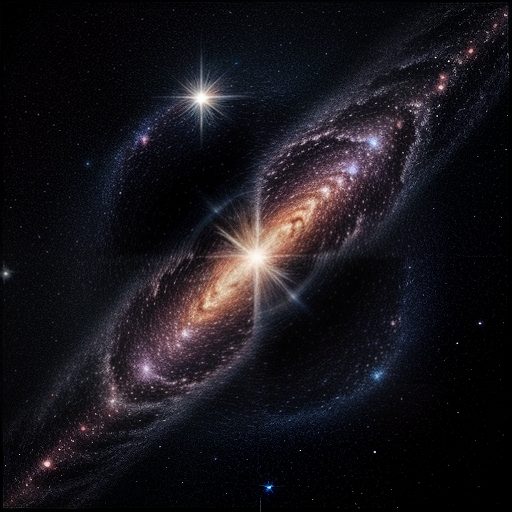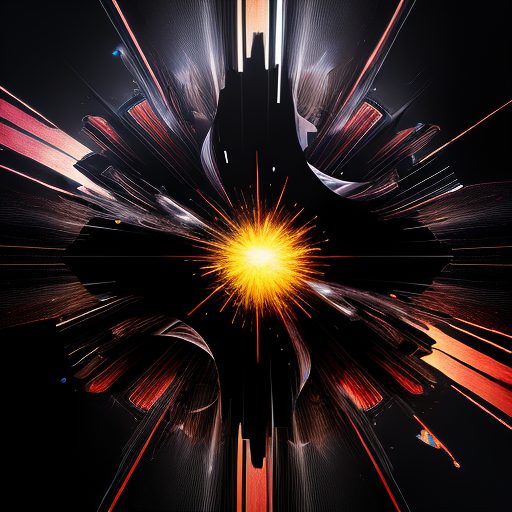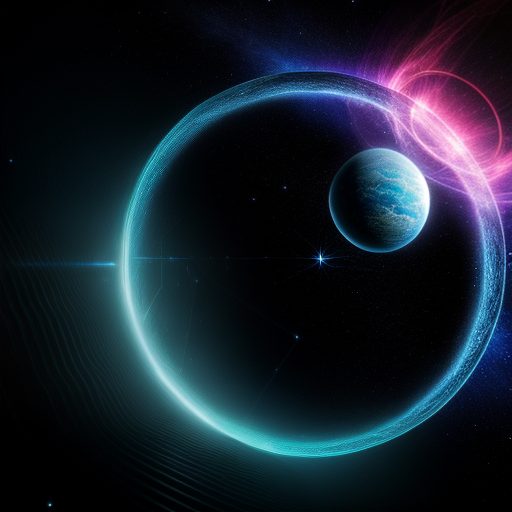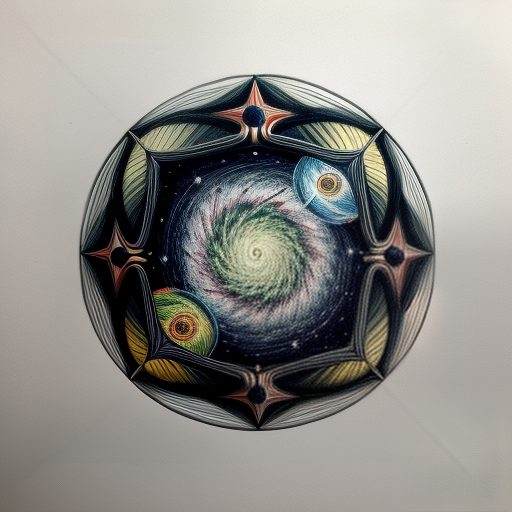
General Relativity
Understanding General Relativity: A Comprehensive Guide
General Relativity, a theory of gravitation developed by Albert Einstein in 1915, is a cornerstone of modern physics. It provides a unified description of gravity as a geometric property of space and time or spacetime. This guide aims to demystify the complex principles of General Relativity and elucidate its applications and impact on our understanding of the universe.
The Foundation of General Relativity
Einstein’s Equations: At the heart of General Relativity are Einstein’s field equations. These ten interrelated differential equations describe the fundamental interaction of gravitation as a result of spacetime being curved by matter and energy. In essence, they tell us how the curvature of spacetime is related to the energy and momentum of whatever matter and radiation are present.
The Principle of Equivalence: A key principle in General Relativity is the equivalence principle, which posits that the force of gravity felt locally while standing on a massive body (like Earth) is the same as the force experienced by an observer in an accelerated frame of reference. This principle bridges the gap between gravity and acceleration, leading to the understanding that mass and energy can curve spacetime.
Curvature of Spacetime and Gravitational Waves
Curved Spacetime: In General Relativity, gravity is not viewed as a force between masses but as the effect of curved spacetime. Massive objects like stars and planets curve the spacetime around them, and other objects move along these curves, which we observe as gravity. This curvature is what guides the motion of planets, light, and even the universe’s expansion.
Gravitational Waves: One of the most fascinating predictions of General Relativity is the existence of gravitational waves – ripples in the fabric of spacetime caused by some of the most violent and energetic processes in the universe. Detected directly for the first time in 2015, these waves have opened a new window in astronomy, allowing us to observe cosmic events billions of light-years away.
Tests and Predictions of General Relativity
Empirical Validation: General Relativity has been confirmed through numerous experiments and observations. The bending of light around massive objects, known as gravitational lensing, is a direct consequence of General Relativity and has been observed numerous times. Similarly, the precession of Mercury’s orbit and the time dilation experienced by atomic clocks aboard satellites are testaments to the theory’s accuracy.
Black Holes and Cosmology: The theory predicts the existence of black holes, regions of space where gravity is so strong that not even light can escape. These celestial phenomena have been observed and studied extensively, providing robust support for General Relativity. Furthermore, General Relativity is essential in cosmology, laying the groundwork for models of the universe’s evolution and the Big Bang theory.
General Relativity in Modern Technology
GPS Systems: One of the most practical applications of General Relativity is in the technology of Global Positioning Systems (GPS). The accurate timing required for GPS operation requires adjustments for the differences in time experienced by satellites in Earth’s orbit compared to those on the surface, a direct result of the effects predicted by General Relativity.
Astronomical Observations: General Relativity plays a crucial role in the interpretation of astronomical data. It is crucial for understanding the behavior of light in strong gravitational fields, the dynamics of galaxies, and the large-scale structure of the universe.
Challenges and Future of General Relativity
While General Relativity has been immensely successful, it is not the final word on the nature of gravity or spacetime. Scientists continue to explore its implications and limitations, particularly at the quantum level where General Relativity and Quantum Mechanics are yet to be reconciled. This quest for a more fundamental theory of gravity continues to drive much of the research in theoretical physics.
Conclusion: The Legacy and Continuum of General Relativity
General Relativity is not just a theory but a framework that has reshaped our understanding of the universe. From the orbits of planets to the bending of light, the warping of spacetime and the dance of gravitational waves, it continues to enlighten us about the very fabric of reality. As we continue to explore the universe, the principles of General Relativity will guide us, challenge us, and inspire future generations of physicists.
In sum, General Relativity is a testament to human curiosity and intellect. It exemplifies our quest for understanding and stands as one of the most profound and beautiful theories in the history of science. As we probe deeper into the cosmos, we carry with us this monumental legacy, always pushing the boundaries of what we know and what we can achieve.

References
For an in-depth exploration of General Relativity, the following sources provide valuable information and context:
- Adler, R., Bazin, M., and others discuss various aspects of General Relativity and related physical theories [1].
- Einstein’s original works, as well as other foundational texts, can be found in the references for the Einstein Light project [2].
- A comprehensive overview of General Relativity, also known as Einstein’s theory of gravity, is available on Wikipedia [3].
- The foundational paper by Einstein (1915) on the General Theory of Relativity is a critical historical document in the field [4].
- Philosophical implications and key works related to General Relativity are discussed in an extensive bibliography available on PhilPapers [5].
- A concise summary of General Relativity and its physical and geometric principles can be found in a paper by Coley (2017) [6].
🌐 Sources
- cambridge.org – References – Introduction to General Relativity
- phys.unsw.edu.au – Relativity: the original references (from Einstein Light)
- wikipedia.org – General relativity
- scirp.org – Einstein, A. (1915) On the General Theory of Relativity
- philpapers.org – General Relativity – Bibliography
- iopscience.iop.org – What is general relativity?

Quantum Cosmology
Introduction to Quantum Cosmology Quantum Cosmology stands as the forefront of unraveling the profound secrets of our universe. Merging the principles of Quantum Mechanics and General Relativity, this advanced field seeks to explain the cosmos’s very early stages, focusing on the Planck era where classical theories of gravity no longer suffice. We delve deep into the realms of spacetime, singularity, and the initial conditions of the universe, exploring how Quantum Cosmology reshapes our understanding of the cosmos’s birth and evolution.
The Birth of the Universe: The Big Bang and Beyond At the heart of Quantum Cosmology is the intriguing narrative of the universe’s inception, commonly referred to as the Big Bang. Traditional models depict a singular point of infinite density and temperature. However, Quantum Cosmology introduces a more nuanced picture, suggesting a quantum bounce or other quantum phenomena that avoid the singularity, offering a revolutionary perspective on the universe’s earliest moments.
Unraveling the Planck Era The Planck era represents the universe’s first
seconds, a time when the classical laws of physics cease to operate. Quantum Cosmology strides into this enigmatic epoch, employing quantum gravity theories like Loop Quantum Gravity or String Theory. These theories aim to provide a coherent description of spacetime’s fabric at this fundamentally small scale, potentially uncovering new insights about the universe’s structure and behavior.
The Role of Quantum Fluctuations In the primordial universe, quantum fluctuations are believed to play a pivotal role. These minute variations in energy density, amplified by cosmic inflation, are thought to lead to the large-scale structures we observe today, such as galaxies and clusters. Quantum Cosmology seeks to quantitatively understand these fluctuations, deciphering their implications for the universe’s overall architecture and destiny.
Navigating through Cosmic Singularities One of the most tantalizing challenges in contemporary physics is understanding cosmic singularities—points where the laws of physics as we know them break down. Quantum Cosmology proposes various scenarios to address these enigmas, suggesting that quantum effects may smooth out singularities or even connect our universe to others through cosmic gateways known as wormholes.
The Quantum Landscape of the Universe The concept of a quantum landscape has emerged, depicting a vast, complex space of possible universes each with their own laws of physics. This landscape offers a staggering vision of a multiverse, where our universe is but one bubble in a frothy sea of countless others. Quantum Cosmology explores these ideas, examining their implications for fundamental physics and our place in the cosmos.
Advanced Theories and Models To tackle these profound questions, Quantum Cosmology utilizes several advanced theories and models. Loop Quantum Cosmology offers insights into the very early universe, suggesting a bounce instead of a big bang. String Theory proposes a universe composed of tiny, vibrating strings, potentially in higher dimensions. These and other models are at the cutting edge, each contributing valuable perspectives to our understanding of the cosmos.
Empirical Evidence and Observational Challenges While Quantum Cosmology is a field rich with theoretical insights, it faces the significant challenge of empirical verification. As researchers devise ingenious methods to test these theories, from observations of the cosmic microwave background to the detection of gravitational waves, the field stands at a thrilling juncture where theory may soon meet observation.
Future Directions and Implications As we advance, Quantum Cosmology continues to push the boundaries of knowledge, hinting at a universe far stranger and more wonderful than we could have imagined. Its implications stretch beyond cosmology, potentially offering new insights into quantum computing, energy, and technology. As we stand on this precipice, the future of Quantum Cosmology promises not just deeper understanding of the cosmos, but also revolutionary advancements in technology and philosophy.
Conclusion: A Journey through Quantum Cosmology Quantum Cosmology is more than a field of study; it’s a journey through the deepest mysteries of existence. From the universe’s fiery birth to the intricate dance of quantum particles, it offers a compelling narrative of the cosmos’s grandeur and complexity. As we continue to explore this fascinating frontier, we not only uncover the universe’s secrets but also reflect on the profound questions of our own origins and destiny.
